Communication Plan Overview
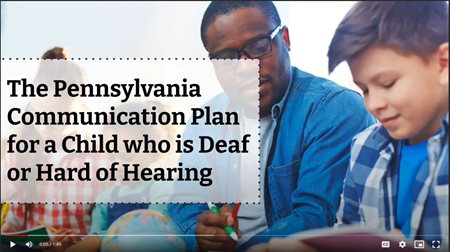
The Pennsylvania Communication Plan for a Child who is Deaf or Hard of Hearing
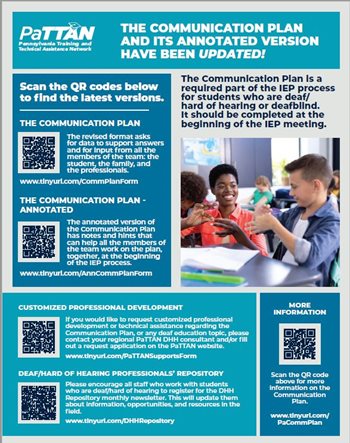
.jpg?lang=en-US&width=350&height=448)
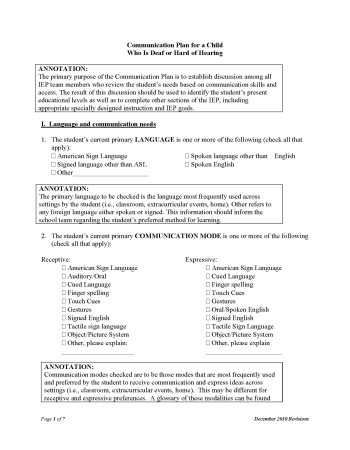
Updated Communication Plan Flyer Communication Plan Annotated Communication Plan
The primary purpose of the Communication Plan is to establish discussion among IEP team members who review the student’s needs based on communication skills and access. It is to be used to complete other sections of the IEP, including accommodations, appropriate specially designed instruction, and IEP goals.
 Therefore, the Communication Plan must be completed prior to the development of the IEP and reviewed at the beginning of the IEP meeting. The Annotated version of the Communication Plan has notes and hints that can help all the members of the team work on the plan, together, during the start of the IEP process and at the beginning of the IEP meeting .
Therefore, the Communication Plan must be completed prior to the development of the IEP and reviewed at the beginning of the IEP meeting. The Annotated version of the Communication Plan has notes and hints that can help all the members of the team work on the plan, together, during the start of the IEP process and at the beginning of the IEP meeting .
-
The Communication Plan is mandated by IDEA 2004 [300.324(a)(2)(iv)] and implements Pennsylvania’s Chapter 14 Regulations [§14.131(a)(1)(iii)] as a required component of the IEP for any student with a hearing loss who is receiving a service, support, or activity from an audiologist and/or teacher of the deaf and hard of hearing.
-
The format was revised in 2022. The revised format asks for data to support answers and for input from all the members of the team: the student, the family, and the professionals.
-
The Communication Plan needs to be reviewed annually and whenever there is a change in the student’s hearing, deafness, or educational situation.
Frequently Asked Questions
Who needs a Communication Plan?
If the IEP team has identified the student as deaf, hard of hearing, or deafblind, and has checked the accompanying box in the Special Consideration section of the IEP, then a communication plan must be developed. In other words, a communication plan needs to be completed for any student with a hearing loss who is receiving a service, support, or activity from an audiologist and/or teacher of the deaf and hard of hearing and is being considered for – or has an IEP.
Who completes the Communication Plan?
The entire IEP team, including the educational audiologist, teacher of the deaf, and educational interpreter provides input for completing the plan. Family members are vital contributors of the IEP team and should be active in the process of completing the communication plan; they have valuable information regarding their child’s current communication and language levels, as well as areas of need. The student also needs to receive instruction about the Communication Plan and be encouraged to participate and share their contributions to the Communication Plan.
When is the communication plan completed?
The Communication Plan must be completed prior to the development of the IEP and reviewed at the beginning of the IEP meeting. Since this documented information drives the development of the IEP each year, it is critical to discuss the student’s communication needs early in the IEP process. The Communication Plan needs to be reviewed annually and whenever there is a change in the students hearing, deafness, or educational situation.
Note: This section is NOT included in Chapter 711. Charter schools are covered under Chapter 711 and the charter school special education regulations do not include a requirement for the use of the communication plan. However, use of the communication plan to guide the IEP team in the development of an IEP for a student who is deaf, hard of hearing or deafblind, is highly recommended even though it is not a required component of the IEP for students attending one of Pennsylvania’s Charter Schools.
Publications and Tools
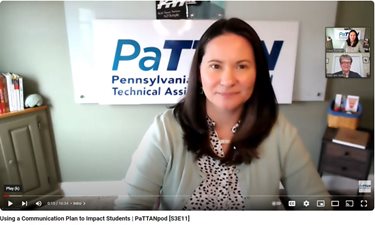 Communication Plan - PaTTAN YouTube Channel - This PaTTANpod explains the process and importance of the Communication Plan for students who are deaf/hard of hearing/deafblind. Mary Ann Stefko, a teacher of the deaf, gives insight about the Communication Plan and how the team can incorporate this tool into a student’s educational process.
Communication Plan - PaTTAN YouTube Channel - This PaTTANpod explains the process and importance of the Communication Plan for students who are deaf/hard of hearing/deafblind. Mary Ann Stefko, a teacher of the deaf, gives insight about the Communication Plan and how the team can incorporate this tool into a student’s educational process.
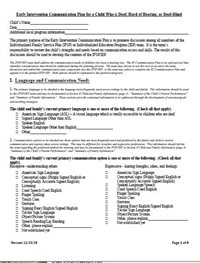
The Early Intervention Communication Plan is recommended for all children who are deaf/hard of hearing, or deafblind. The plan has detailed discussion points that families with children who are deaf or hard of hearing and IFSP or IEP team members should consider during plan development. Information in the plan addresses language and communication needs; communication options, opportunities for direct communication; and progress, assistive technology, devices and services. It also provides a glossary of terms for use.
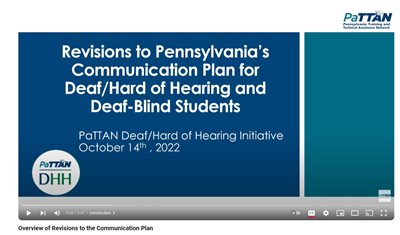 Overview video to describe the 2022 revisions to the Communication Plan
Overview video to describe the 2022 revisions to the Communication Plan